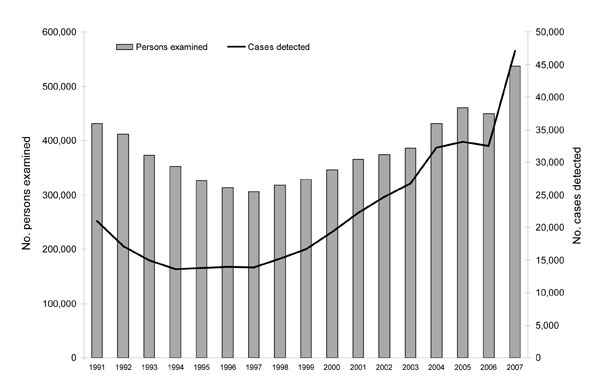Volume 14, Number 9—September 2008
Dispatch
Emergence and Spread of Chlamydia trachomatis Variant, Sweden
Figure 2

Figure 2. Chlamydia trachomatis reports, Sweden, 1991–2007. The number of persons examined and cases detected in 2007, when diagnostic tests for chlamydia had been changed, is in line with the increasing trend from 2004 and before. The figures for 2005 and 2006 reflect the failure to detect cases of the new chlamydia variant in some counties.
Page created: July 13, 2010
Page updated: July 13, 2010
Page reviewed: July 13, 2010
The conclusions, findings, and opinions expressed by authors contributing to this journal do not necessarily reflect the official position of the U.S. Department of Health and Human Services, the Public Health Service, the Centers for Disease Control and Prevention, or the authors' affiliated institutions. Use of trade names is for identification only and does not imply endorsement by any of the groups named above.